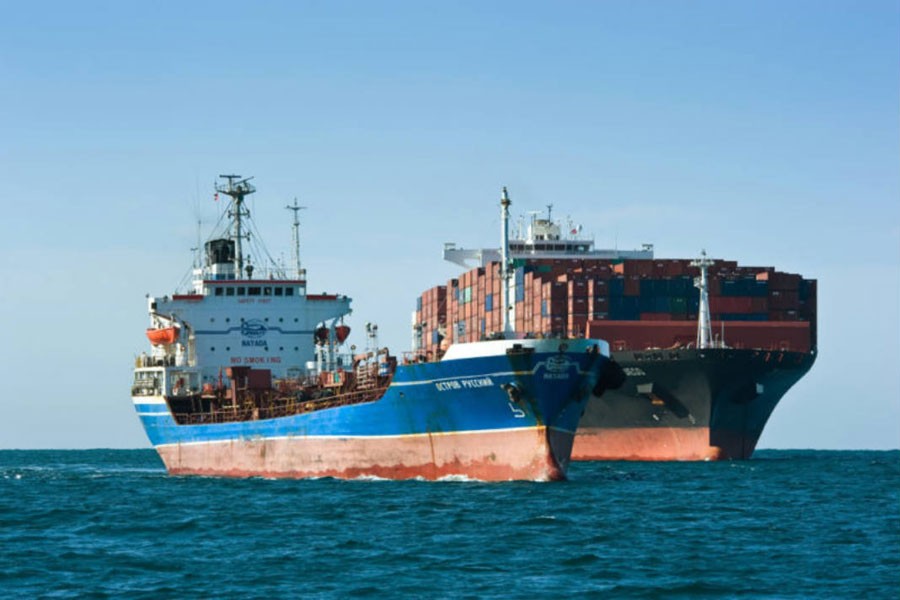The noxious emissions, largely sulfur oxides, as well as nitrous oxides and particulate matter, have become a major environmental concern and have been proven to adversely affect global health as they're discharged into the atmosphere. According to a Goldman Sachs study, burning high sulphur fuel oil (HSFO) accounts for almost 90 per cent of a sulphur emission globally, with the largest 15 vessels producing more Sulphur than the combined total of all the world's automobiles.
Fuel oil for shipping has long been one of the dirtiest forms of fossil fuel, made up of the sort of low-value and cheap crude oil that is unsuitable or expensive to refine into high-grade products such as petrol for cars, or kerosene for planes. Ship engines have been designed to cope with such low-grade fuel, and the emissions they belch out as a result mostly happen far from land, making the accompanying pollution less visible and, for many decades, largely ignored by governments.
New International Maritime Organisation (IMO) rules have forbidden ships from using fuels containing more than 0.5 per cent sulphur, unless alternative technology such as an Exhaust Gas Cleaning System (scrubber) is being used. For ships without scrubbers, the carriage of fuel with a sulphur content over 0.5 per cent is prohibited after March 01, 2020. Failure to comply with the global regulations will result in fines or vessels being detained and in some jurisdictions the risk of imprisonment, which could affect vital requirements such as insurance cover.
The new IMO regulations changing the quality of shipping fuel and the possible impact of the new rules on fuel oil sector, in particular, have already affected shipping globally. It has taken decades to build the fuel supply chain for more than 60,000-vessel global merchant fleet. The impending 0.5 per cent sulphur cap on marine fuel threatens to upset this entrenched structure, with price instability as a likely result.
HSFO price decreased significantly but 0.5 per cent sulphur bunker fuel (VLSFO) prices have increased rapidly. As demand for HSFO falls dramatically, its price is forecast to slip below USD300/tone. This could benefit power generation companies in many countries which are operated by HSFO. On the other hand, the higher demand from the maritime market pushed wholesale prices of VLSFO from $450-$550 per metric tonne (pmt) last year to $710-$785pmt in January 2020 at various bunkering ports in the world. According to ship & bunker traders the price of VLSFO in the world's largest bunkering port of Singapore $720-$750 pmt compared to $520-$550 pmt during July-November 2019.
Currently, the VLSFO - HSFO spread in Singapore is at USD 340pmt. Similarly, the MGO LS - HSFO spread is at USD 346 pmt, the highest level since 2014. Due to the pressure of VLSFO, the spread between VLSFO and LS MGO narrowed significantly. As per S&P Global Platts data, the spread in Singapore has narrowed to $15, in Rotterdam it has narrowed to $3, while in Houston it has narrowed to $25. Whatever the underlying causes, the price levels for VLSFO and MGO LS have risen by 30 per cent and 24 per cent respectively from start of December to the start of January. What is clear is that owners are experiencing both high and uncertain fuel prices in the early days of IMO 2020.
Daily bunker fuel demand in international shipping sector is more than 5.0 million barrels, which is approximately equivalent to half of global fuel oil demand. As a result of switching to very low sulphur fuel oil (VLSFO), it's anticipated that approximately 3.5 million barrels of low sulphur fuel will be required. The demand increase is expected to drive up fuel costs but nobody knows for sure what the cost of fuel will be for the next few months and how long it will persist on.
Refinery companies are not obligated to produce VLSFO but shipping companies are obligated to use the compliant fuel to comply with the new rules. It may be in the refiners' commercial interest to keep the supply of compliant fuel as much as is required. The oil industry feared refiners would not be able to make enough diesel and VLSFO. Of course, the high cost of refinery investment, investing in technology to convert fuel oil into distillates is not only expensive ($1 billion+ per refinery) it is also time-consuming to implement (5-7 years). There is a lot of pricing uncertainty in general about the new low-sulphur blends because there is no standard of new blended fuels; different companies may release different blends and nobody knows how that is going to be priced.
The question for ship-owners now is not only how large the increases will be, but also there is great uncertainty about how long it may take to push fuel prices down to a new equilibrium.
Oil producers, refiners and consumers will have to review their activities and take action to mitigate business impact from these impending changes in demand and prices. While IMO 2020 will benefit everyone in the long run, it might lead to short-term price increases across shipping and transportation as refiners and suppliers bring the production level up to requirement.
MarEngr Md. Easin Molla is Chief Engineer, Meghna Adventure, Mercantile
Shipping Lines Ltd.


